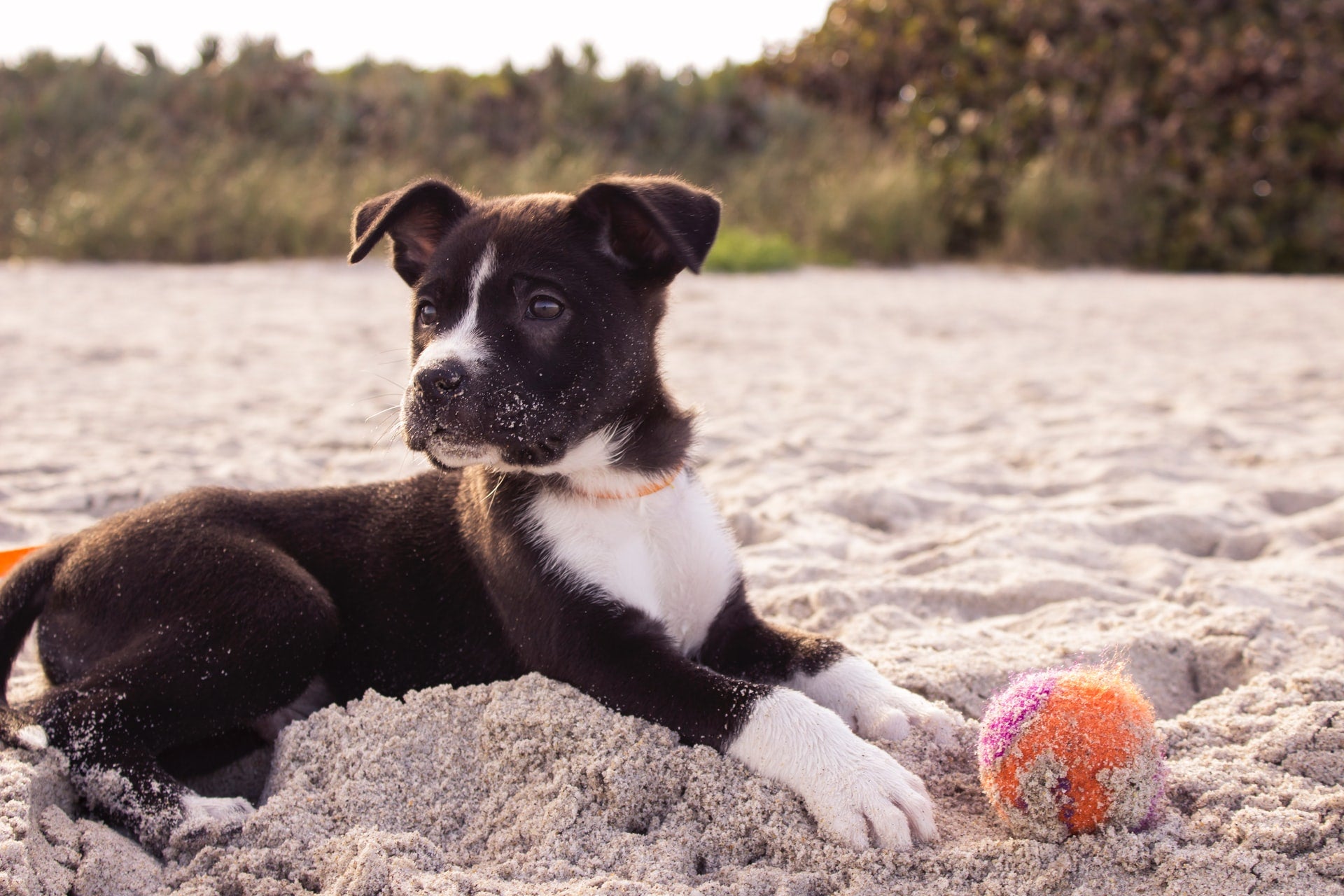Puppies are adorable, rambunctious little bundles of energy. While you may be eager to jump right into some fun activities with your new pet, it’s important to note that puppies have drastically different exercise requirements compared to their full-grown counterparts.
Exercise is important for your pup. However, some forms of exercise can be detrimental to his growing body. Finding the line between sufficient exercise and too much exercise can be tough, so keep reading for some expert tips to protect baby Fido’s developing joints and bones!
What are Puppy Growth Plates?
The long bones in your pup’s legs grow from at least two growth plates. When Fido is born, those growth plates are made of soft cartilage. As he gets older, they gradually close and calcify, hardening into solid bone.
Because the growth plates are relatively soft and flexible during puppyhood, they’re more vulnerable and prone to injury. Falling, twisting, and putting too much stress on the body can damage those delicate growing bones, so it’s important to be mindful of your pup’s exercise types and duration.
Dogs age at different rates. Most dog growth plates are done growing after approximately 12 months of age. However, this can vary depending on breed—some are done growing within 8 months, while growth plates of larger breeds may stay open until up to 20 months of age. Of course, your vet will be able to tell you more about the progress of your individual pup’s growth plates.
Puppy Exercise Guidelines
Too much exercise can damage your puppy’s growing joints and bones. At the same time, too little exercise can keep those bones from growing to their full potential. Understandably, finding the right type and amount of exercise for your dog can be a difficult balancing act.
Activities to avoid include:
-
Jumping (this means no agility jumps or frisbee—instead, try rolling a ball toward your pup on the ground)
-
Jogging
-
Running on hard surfaces
-
Running—or even walking—on slippery surfaces (while slipping and sliding can lead to an adorable splayed-out puppy puddle, this isn’t good for Fido’s growing bones)
- Any extended physical activity (depending on the activity, more than 5-10 minutes at a time can even be too much)

Safe activities for puppies include:
-
Walking on soft surfaces such as grass or sand (plus, variety in textures and surfaces is good for socialization)
-
Going for multiple short walks per day rather than 1-2 longer ones (this can be as simple as circling your backyard to practice leash training)
-
Playing with other dogs or puppies of similar size
-
A gentle game of tug-of-war
-
Swimming or wading in shallow water
- Learning basic commands. After all, as any dog owner knows, puppyhood is filled with lots of training and learning!
Remember to keep play sessions with your puppy short and sweet. While puppies have lots of energy, they have a lot less stamina than adult dogs. The good news is that baby Fido will likely have no problem letting you know that he’s too tired to keep playing and that it’s time for a nap!
Promoting Healthy Joints in Dogs
When you think of mobility issues, you likely think of senior dogs. However, dog joint issues aren’t exclusive to seniors—they can affect dogs at any age. Breed, weight, injuries, and existing health issues can all contribute to joint problems in dogs.
Fortunately, you can be proactive as a pet owner by giving your dog joint health supplements well before you start noticing any signs of joint problems. Addressing existing health problems is one thing, but defending against them before they occur is even better.
That said, you’ll want to hold off on giving your puppy joint health supplements until after his growth plates have closed and his bones are fully formed—typically after he’s at least 12 months old. If you’re not sure whether it’s safe to give your dog supplements, it’s always a good idea to check with your vet.
In addition to the obvious treats and toys, we have a fun gift suggestion for baby Fido’s first birthday party: PetHonesty’s 10-for-1 Multivitamin!
These tasty daily soft chews combine a well-rounded blend of natural ingredients to support your dog’s overall health. By giving your pup these chews packed with vitamins, minerals, omegas, probiotics, and glucosamine, you’ll be promoting healthy joints, immune system, skin, coat, and digestion.
Sources:
https://anythingpawsable.com/5-activities-to-avoid-with-growing-puppies/
https://www.akc.org/expert-advice/health/when-does-my-puppy-finish-growing/
https://www.akc.org/expert-advice/health/puppies-how-much-exercise/
https://pethelpful.com/dogs/Puppy-Exercise-Needs-How-Much-is-Too-Much













